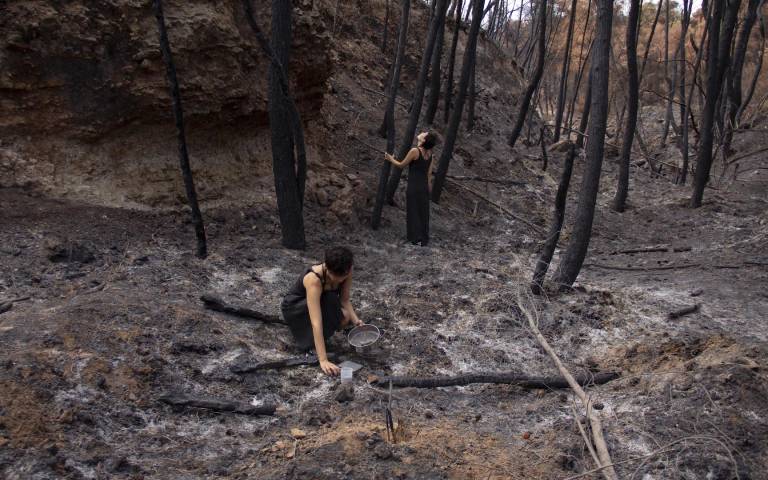 Research
Research

Subject
Sympoietic Eco-Plexis: A Post-digital Approach Towards Ecologically-Crafted Textile Architectures
First and second supervisors
Abstract
In the past decade, there has been a shift towards rethinking materials, digital tools and fabrication methods, leading to a post-digital approach. Post-digital implies that the computational tools are interwoven with sociocultural and situated environments, pushing for new cultural and material forms, where materiality, craft, ecology and sociocultural interdependencies have started to become key aspects of the design process. Therefore, it is vital to responsibly create hybrid design approaches where computational tools work in synergy with materiality in developing new cultures.
The proposed practice-based research sets out to develop architectural craft forms through ecological thinking and fabricating prototypes. The research explores how new cultures of ecological architectural craft can be cultivated by building on the understanding of Haraway’s sympoietic systems. It uses textiles as a medium to understand how craft techniques can be reinterpreted to inform current design, material and fabrication methodologies. Textile making is a craft known from prehistoric times. It is a performative action of construction and deconstruction that could be considered the first architecture. Thus, the first known architects can be identified as weavers who possess the skills to produce structurally complex enclosures. Textiles can also be seen as a medium to express stories and myths transferred from one generation to another and can indicate aesthetic values, technological advancements and sociocultural characteristics.
The research examines how to retranslate, reinterpret and construct parallels from craft processes and theories, in order to cultivate current design methodologies through a dynamic framework where science and myth are woven together. The ‘architect weaver’ recodes textiles and textiles processes to create analogies that become the vehicle and the vocabulary for making. Textiles are used as a theoretical metaphor and construction method, working with hybrid processes of craft and computation to establish new ecologically crafted architectural cultures.
Biography
Nikoletta Karastathi is an architect, PhD Candidate and Lecturer at The Bartlett School of Architecture. She has a diverse background, having worked in the industry as a practicing architect and in academia as a design tutor at Bristol, Cardiff, Newcastle and Edinburgh. Her work has been exhibited at the London Design Festival, Dutch Design Week, Lakeside Arts Gallery and the Baltic Centre of Contemporary Arts. Her primary areas of interest include architecture, textiles, computation and material programmability.
Publications
- Ng, P. et al. (2021) “Ai in+form: Intelligence and aggregation for solar designs in the built environment,” Blucher Design Proceedings [Preprint]. Available at: https://doi.org/10.5151/sigradi2021-5.
- Nabil, S. et al. (2019) “Seamless seams,” Proceedings of the 2019 on Designing Interactive Systems Conference[Preprint]. Available at: https://doi.org/10.1145/3322276.3322369 .
Image: Knitted Anamnesis by Nikoletta Karastathi
 Close
Close

